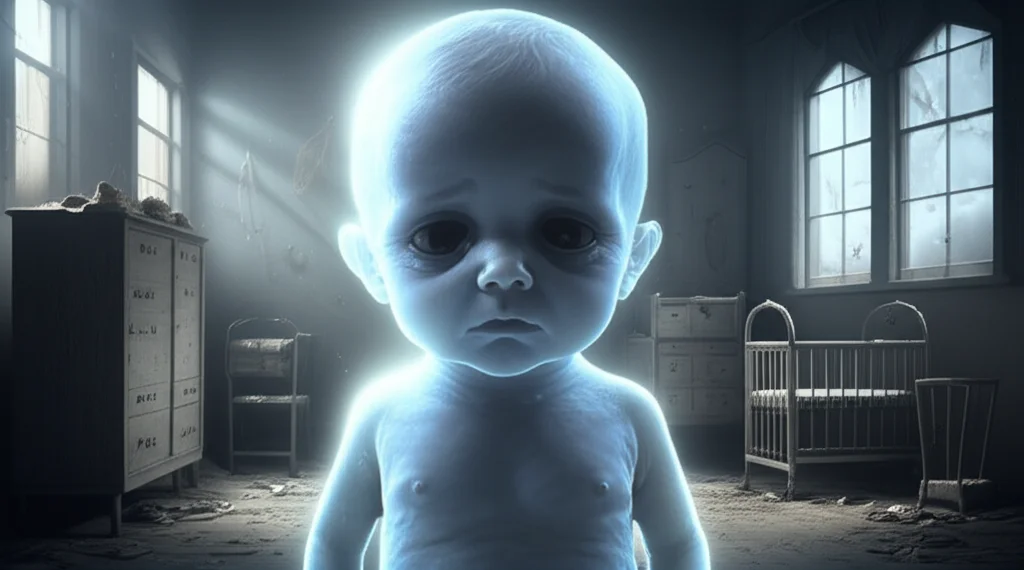The Stillborn Ghost, known in Chinese as 胎死鬼 (Tāisǐ Guǐ), is a tragic and malevolent spirit rooted in traditional Chinese folklore. Also referred to as the Ghost of the Unborn Child, this entity represents the soul of a child who died before or during birth, often due to unnatural causes or neglect. Unlike other restless spirits that seek peace, the Tāisǐ Guǐ is consumed by unresolved grief, injustice, or abandonment—fueling its desire for vengeance.

In Chinese spiritual beliefs, the stillborn ghost is considered one of the most sorrowful yet dangerous types of wandering souls. Without a proper burial or recognition, these spirits are believed to remain trapped between worlds, unable to move on. Their presence is often associated with hauntings in homes, hospitals, or abandoned clinics where miscarriages or illegal abortions occurred.
This article explores the origins of Tāisǐ Guǐ, its distinct characteristics, and its cultural impact in both historical and modern contexts. As a symbol of lost life and societal taboos, the Stillborn Ghost continues to evoke fear and fascination across generations.
Information
- Name: Stillborn Ghost / 胎死鬼 (Tāisǐ Guǐ)
- Alternative Names: Ghost of the Unborn Child, Wandering Infant Spirit
- Age: Over 600 years; first recorded in Ming Dynasty (1368–1644) folk tales
- Gender: Typically depicted as a childlike figure without clear gender identity
- Abilities: Crying sounds at night, appearing in reflections, causing nightmares, inducing miscarriages
- Interests: Seeking attention, haunting maternity wards, demanding offerings, seeking revenge for unjust death
Origin
The origin of the Stillborn Ghost lies in ancient Chinese beliefs about the afterlife and the spiritual consequences of improper burials. According to Ming and Qing dynasty folklore, when a child dies before or during birth—especially under unnatural or secretive circumstances—their soul cannot proceed to the underworld. Instead, it lingers in the physical world, filled with confusion and sorrow.
These spirits were often linked to abandoned infants, miscarried fetuses, or stillborn children whose families failed to perform ancestral rites. In some stories, mothers who secretly disposed of their unborn children out of shame would later be haunted by the vengeful spirit of the child. One famous tale tells of a midwife who ignored a stillbirth and buried the infant improperly, only to be tormented by a crying child ghost that appeared nightly, whispering, “Why did you leave me?”
Such stories served as moral warnings about responsible parenthood, respect for life, and the importance of ancestral rituals in Chinese culture.
Characteristics
The Stillborn Ghost typically appears as a pale, underdeveloped child with hollow eyes and a perpetually weeping expression. It is often heard before seen—its faint wails echoing through empty hallways or near water sources like bathtubs and wells.
Unlike more visible ghosts, the Tāisǐ Guǐ does not always appear in full form. Sometimes, it manifests as a chilling breeze, an invisible weight on the chest, or a shadow darting in the corner of the eye. It is especially drawn to pregnant women, whom it may haunt to relive its own trauma or prevent another life from being born.
One notable trait is its connection to mirrors and reflective surfaces, where it may reveal itself briefly before vanishing. Rituals to appease it often involve offering small toys, red cloth, or incense at crossroads or temples dedicated to Guanyin, the goddess of mercy.
Its behavior reflects both innocence and malice, making it one of the most psychologically unsettling figures in Chinese ghost lore.
Cultural Significance
The Stillborn Ghost holds deep cultural significance in Chinese society, particularly in relation to reproductive ethics, family honor, and spiritual responsibility. In rural areas, elders warn young couples against concealing pregnancies or performing illegal abortions, citing the risk of attracting a vengeful Tāisǐ Guǐ.
This belief has influenced numerous modern horror films, such as The Child’s Curse (2019) and Red Thread (2021), which explore themes of maternal guilt and supernatural punishment. Additionally, folk traditions persist in southern China, where Taoist priests are called upon to perform exorcisms in maternity wards or haunted homes suspected of harboring infant spirits.
In literature and oral storytelling, the Stillborn Ghost serves as a symbol of unacknowledged loss, reminding communities of the spiritual cost of neglect. Its enduring presence in contemporary media and ritual practice underscores how deeply these beliefs continue to shape Chinese views on life, death, and the unseen world.
